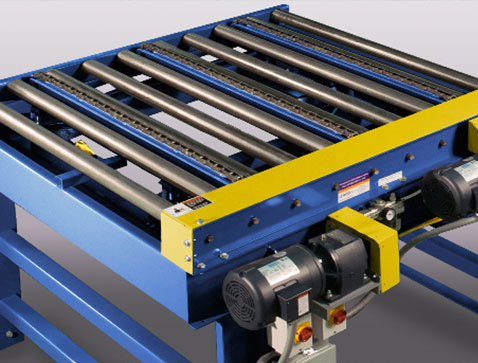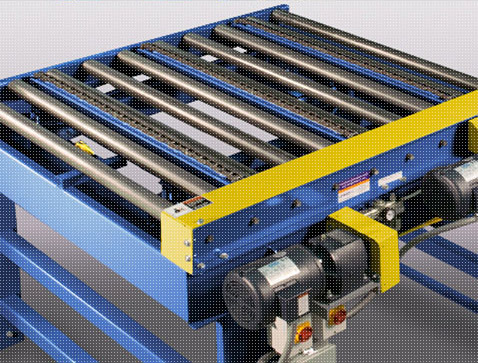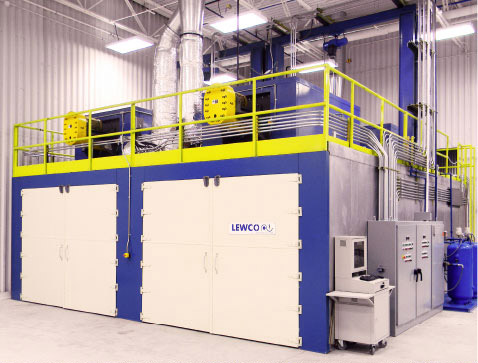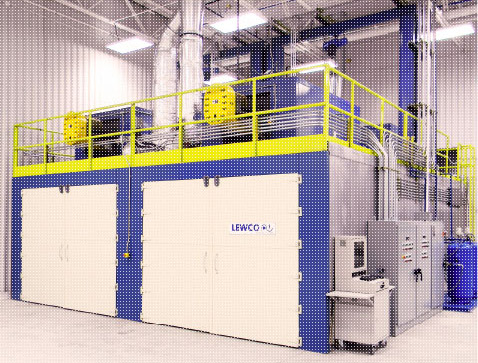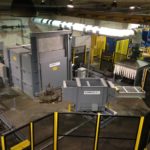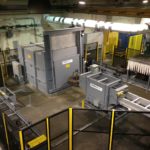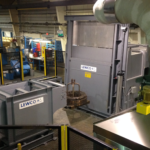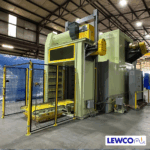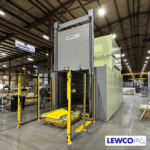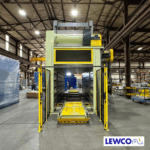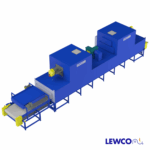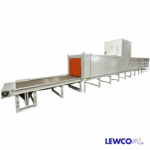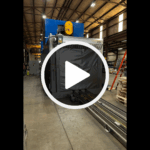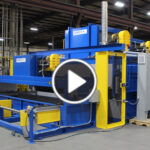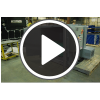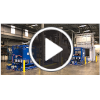Automated Heat Treat Cell Solves Production Bottleneck
SANDUSKY, OH – LEWCO Field Service personnel recently finished installing their second 1,600°F automated heat treat cell for a leading manufacturer of specialty wire. The repeat customer purchased their first cell from LEWCO in 2012. After realizing a significant increase in production as a result of the first purchase, they returned to LEWCO to order an additional cell.
Similar to the first heat treat cell, the project included a 1,600°F high-convection furnace, an in-feed staging conveyor, an automatic furnace loader, and a discharge cooling conveyor. The cell is fully automated, allowing it to operate continuously 24/7. Enhancements made to the newest cell include increased heat capacity and advances in the furnace loader design. The total heat capacity was increased by almost 25% to provide faster recovery times after loading and unloading. The furnace loader design was improved to shorten the cycle time and provide smoother operation with more precise control.
According to the customer, “Our first LEWCO Furnace significantly improved operating efficiency. The furnace doesn’t need to cool down, so we reduce downtime and increased productivity. The high convection provides much faster heat up rates and better temperature uniformity than any of our older furnaces. Furthermore, due to the fully integrated and automated system, we are able to run three full shifts, with very little human capital.”
How it Works: Coils of specialty wire are placed on custom carriers or “pins” and then loaded on the in-feed staging conveyor. The staging conveyor can hold up to (4) fully loaded pins. In automatic mode, the conveyor automatically indexes forward, presenting a pin to the loader, at which time the loader lifts the pin, rotates, the furnace door opens and the pin is loaded into the hot furnace. The staging conveyor then automatically indexes forward to position the next pin for pick up. Once the pre-programmed heat treat cycle is complete, the door opens and the loader removes the coil from the furnace. The loader then rotates and lowers the pin onto the cooling conveyor. This first station on the cooling conveyor has a high efficiency exhaust hood pulling ambient air up and around the coil to facilitate rapid cooling. An infrared thermometer senses when the coil is below a preset temperature at which time the conveyor indexes the coil out from under the hood. The cooling conveyor can accommodate up to (4) pins. When a coil reaches the final position on the cooling conveyor a visual alarm alerts a fork truck operator to remove the coil from the cell and transfer it to the next stage of production.
The high-convection heating at 1,600°F is very unique and provides much faster heat-up rates and better temperature uniformity than traditional radiant heat designs. Per standard LEWCO testing, an AMS2750E temperature uniformity survey was conducted in order to meet specification. The results surpassed customer expectations, with the furnace achieving a temperature uniformity of +/- 5°F at 1,600°F.
The entire cell is controlled by an Allen Bradley PLC based control system. Operator interface is accomplished via a Panelview Plus touch screen employing Factory Talk HMI programming. The HMI and PLC programming includes recipe creation, editing and storing. It also includes full system control in automatic and manual modes, which are selectable from the HMI touch screen interface. The HMI includes Factory Talk Historian software for complete data collection. This data can then be used for quality control, reports, and increased production. The entire cell is surrounded by a heavy-duty safety fence with electrical interlocks at all openings. Operators have full system control from outside the safety fence via the touch screen HMI. The electrical system and controls were designed to meet CAT 3 safety standards. The PLC has Ethernet communication capability so LEWCO technicians and/or engineers are able to provide troubleshooting support for the customer remotely.
“One key to our success is continuous improvement. When this customer approached our engineers about building another cell, we immediately began to talk about how we could make it better. Our engineers spent considerable time listening and then together we figured out how to improve it.” – Ron Guerra, P.E. and President, LEWCO, Inc.

